2019 Alfa Romeo Stelvio Super
| The Good: – Great handling – Fair highway power – Good fuel economy |
The Bad: – Cabin trim could be better – Jerky low-speed drive – Limited offroad abilities |
Alfa Romeo has a rich and varied history. Around for a very eventful century, the Italian brand is now a sub-division of the vast Fiat-Chrysler empire that also includes Dodge, Jeep, Maserati and Ferrari. But Alfa Romeo shares nothing immediately obvious with its parent company’s other products — not even a Dodge touchscreen like what Maserati does. Alfa is operating on its own unique path right now, with a bespoke platform, bespoke-tuned engines and bespoke interior tech kept within their own small range of products. That is both beneficial and detrimental to their first SUV model — the Stelvio.
The compact Stelvio looks absolutely stunning or absolutely terrible, depending on who you ask. It’s a divisive design, with a blobby front-end, three front grille openings, and a thick rear end that lacks a C-pillar window. It vaguely looks like a mix of an Infiniti QX50 and a Mazda CX-5 from afar, although once you get close enough, there is no mistaking it for anything else.
Weight-saving measures include aluminium fenders, bonnet and tailgate as well as unseen components such as suspension bits aside from a carbon-fibre propshaft, allowing the Stelvio to tip the scales at a respectable 1,735 kg.
Our Stelvio Super Q4 variant came with optional 20-inch alloys (19-inch is standard), black plastic trim along the bottom and wheel arches, real integrated dual exhaust tips, a faux skidplate only on the rear bumper, and the offset front number-plate holder that seems to have become tradition since the late 1990s. There are better-looking rivals — the Jaguar F-Pace, and to a lesser extent, the aforementioned Infiniti QX50, come to mind in this class as aggressive design leaders.
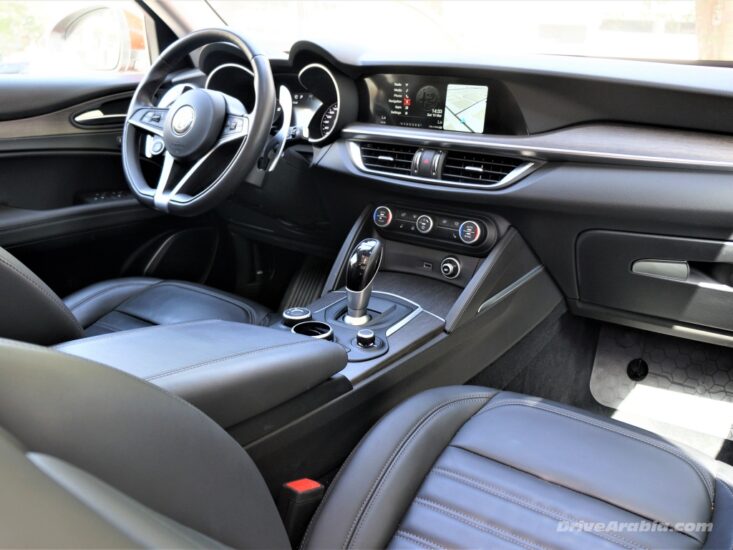
Inside, the cabin design has some flashes of brilliance — the double-domed physical gauges, the wraparound black panel that hides the central-console LCD screen, the matte wood finish, and the massive metal paddle-shifters are all stand-out elements. The big letdown is in the choice of cabin materials. Aside from the standard leather seats, every upper surface feels like it’s simply covered in the thinnest possible layer of firm leatherette, while there are a bit too many exposed hard-plastic panels in below-the-waist areas.
As for that central 8.8-inch screen, as nicely as it is integrated, is too small to be useful because the interface crams text and graphics in a widescreen format with not much height, controlled via a knob placed behind the shifter, with a separate radio knob and a driving-mode selector knob on either side of it. That’s a lot of knobs to juggle while driving. However, there are steering-wheel shortcut buttons for the driver, which again is cluttered with a engine-start button as Alfa tries to show their loose Ferrari connection.
Other features include a rather average dual-zone auto a/c with rear vents, HID headlights with LED running lights and tails, standard front/rear sensors with a low-quality rear camera, Apple Carplay/Android Auto, navigation, power front seats, smart key, a full set of airbags including knee airbags, automatic crash-prevention braking and lane-departure warning, with options such as a panoramic sunroof, 14-speaker Harman Kardon audio, blind-spot monitoring and active cruise control. But then it’s missing some features that cheaper cars offer nowadays, such as remote start, lane-keeping assist, cooled seats and a wireless charger.
Space inside is fair, decent enough for average-sized adults in the back. Boot floor space seems to be about the same as rivals, but limited in upper volume due to the sloping rear, making it among the smallest cargo capacities in its class at a quoted 525 litres.

Powered by a 2.0-litre turbo 4-cylinder making a stout 280 hp at 5250 rpm and 400 Nm of torque at 2250 rpm, and mated to an 8-speed automatic and rear-biased all-wheel-drive, it is quoted as being able to do a top speed of 230 kph. We managed a 0-100 kph time of 7.0 seconds in a Dubai winter afternoon run, almost a second-and-a-half longer than the quoted time. As-tested fuel economy is good though, at 11.5 litres/100 kph (8.7 km/litre). There is a firebreather 503 hp Quadrifoglio option for those who prefer more power (and can afford it).
Turbo lag is very obvious at low speeds, exacerbated by a massive delay in responding to throttle inputs, making it overly tricky to jump into gaps in traffic at junctions. Once up to speed, power delivery is very good, with help from the smooth gearbox, although the engine note is uninspiring compared to Alfas of old (we had an old one, so we know).
What the Stelvio Super shines in is handling. While the steering lacks feedback, it is well-weighted, enough to confidently pilot this tall Giulia sibling quickly around corners and in the twisties. Body roll is minimal, there’s great grip from the 255/45 tyres, and the brakes stop strongly when the pedal is pressed hard.
However, there is a weird issue with the brake-by-wire pedal — if partially pressed, it doesn’t do anything, so you need to press it with more force, leading to a jerky stop in low-speed driving. The lack of linear response is a bit scary initially if you don’t start adjusting for this behaviour, although you shouldn’t have to.
The ride comfort is decent enough, a bit firm over rougher surfaces thanks to low-profile tyres, but generally smooth on most roads. The sound-deadening is average for a premium car. Also average is its ground clearance as an SUV, so it’s best to stick to gravel trails and flat-packed sand.
The Alfa Romeo name conjures up images of classic roadsters, sweet-sounding coupes and boxy touring cars. Thanks to more recent celebrity endorsements, it remains a darling brand for car enthusiasts who feign nostalgia without ever owning one. The Stelvio now offers up a car that these enthusiasts can finally purchase without making excuses about practicality and affordability, and it’s telling that they are still nowhere to be seen when it’s time to put their money where their mouth is.
| Price Range: Dh 211,000-245,000 Current Model Introduced in: Body Styles: Engines: Transmissions: Setup: Suspension: |
Brakes: Front: discs Rear: discs Curb Weight: Length: Wheelbase: Top Speed: Test Acceleration 0-100 kph: Observed Test Fuel Economy: |
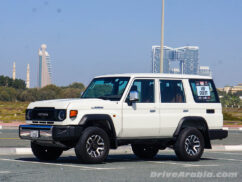
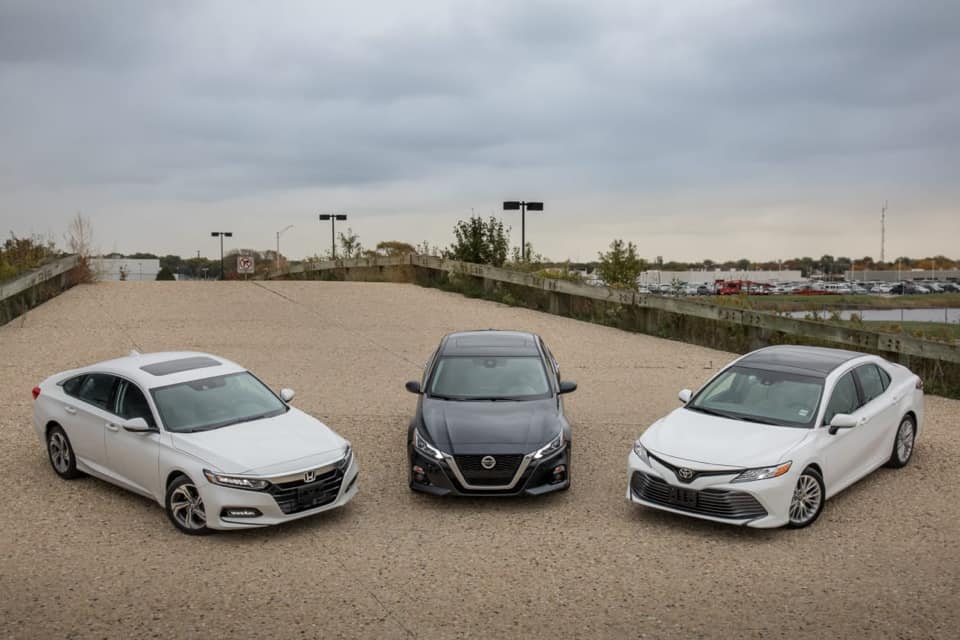
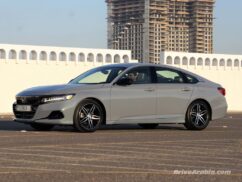
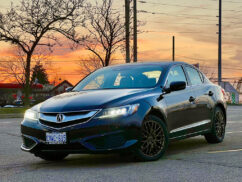
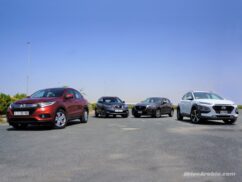
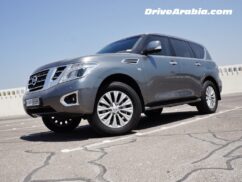
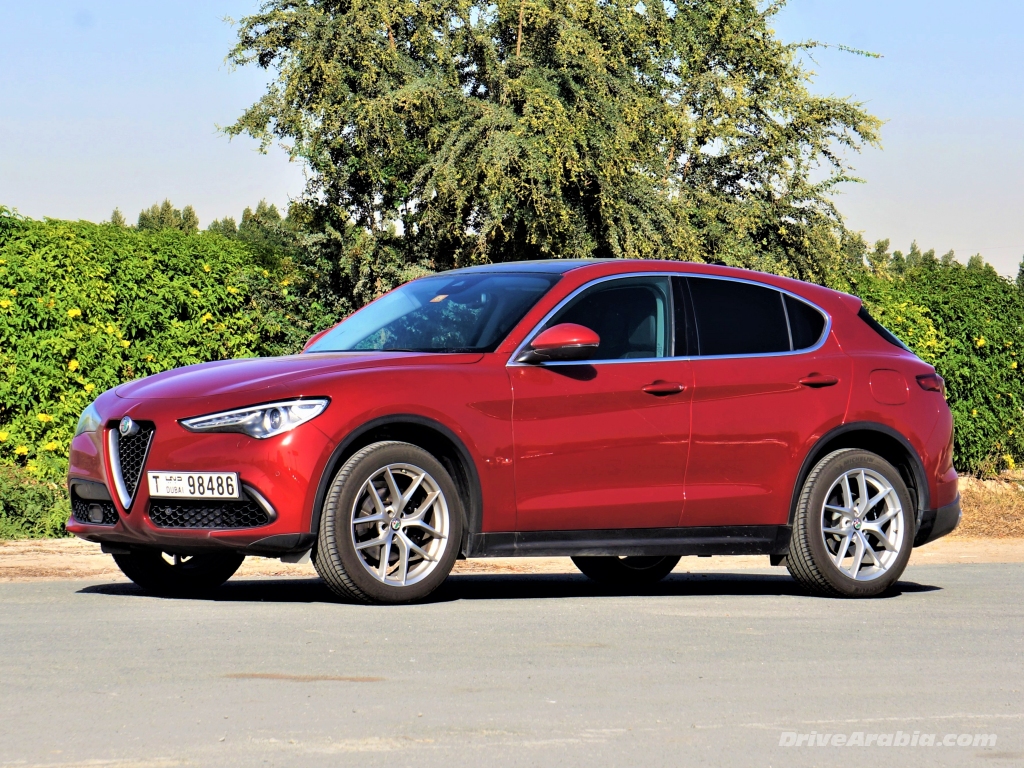

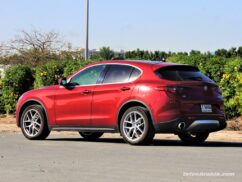
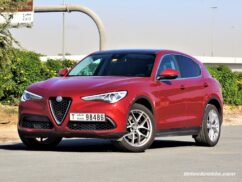

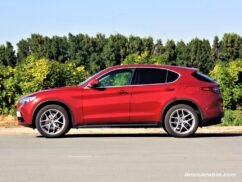
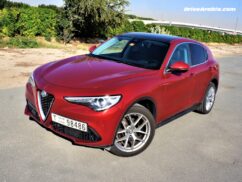


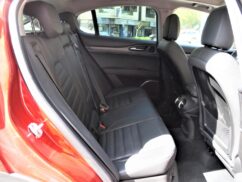
Comments
Mohammad Haris
Rear profile of the vehicle is not visible as the photos of the vehicle are against sunlight